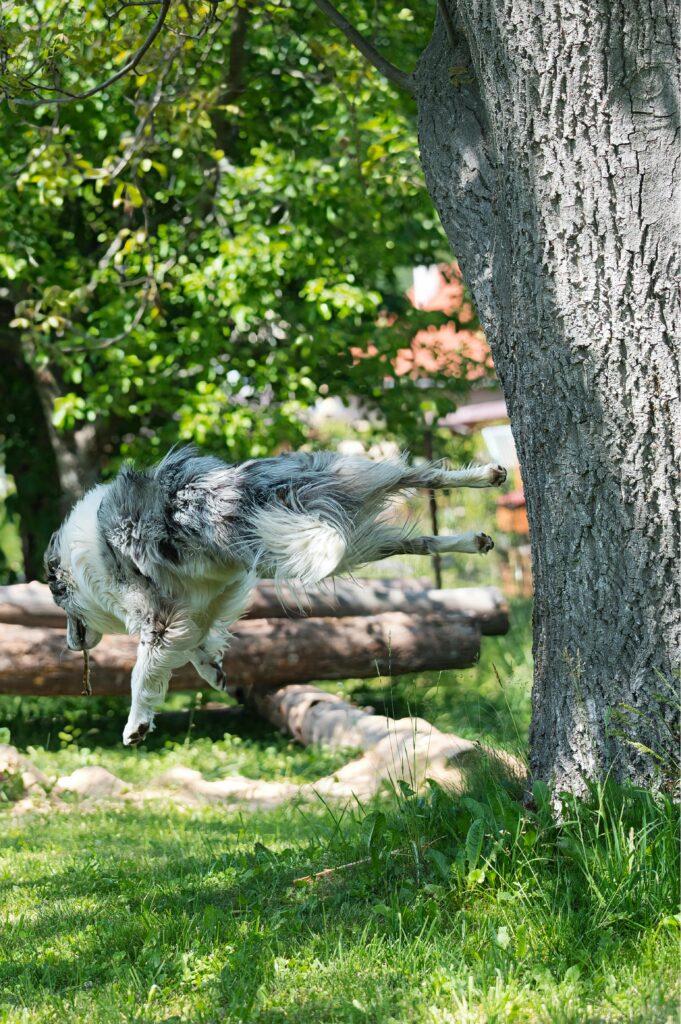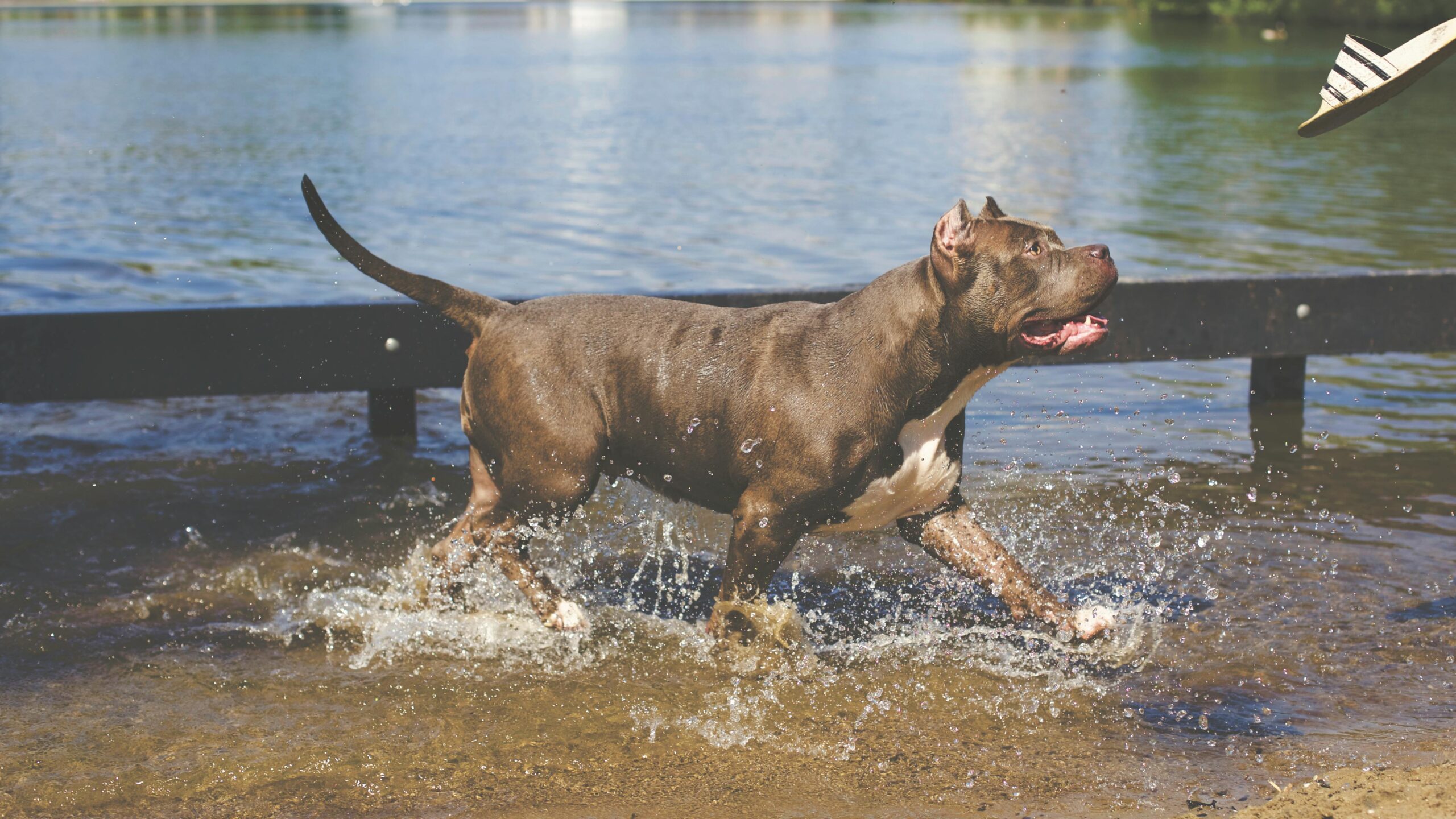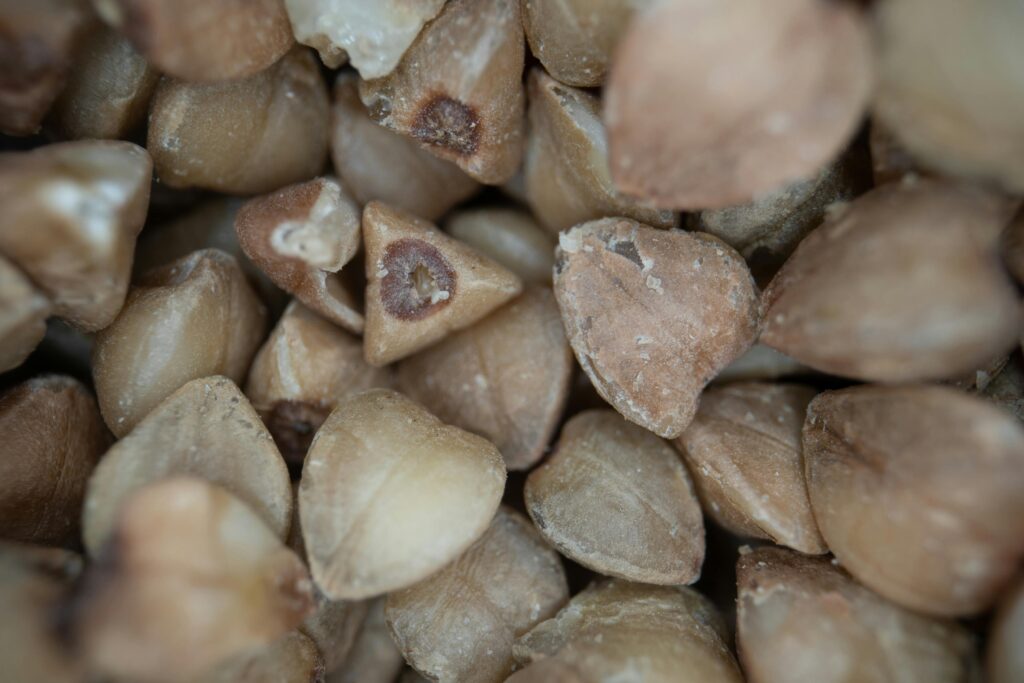- Understanding Dog Muscle Anatomy
- Can Dogs Actually Pull a Muscle?
- Common Causes of Muscle Strains in Dogs
- Symptoms of a Pulled Muscle in Dogs
- Diagnosing Muscle Injuries in Dogs
- First Aid and Immediate Care
- Veterinary Treatment Options
- Home Care and Recovery Tips
- Preventing Muscle Strains in Dogs
- Breeds Prone to Muscle Strains
- Muscle Strains vs. Other Injuries
- How Long Does It Take for a Dog to Recover?
- Myths About Dog Muscle Injuries
- When to Consult a Vet
- Conclusion
- FAQs
Yes, dogs can absolutely pull a muscle. Muscle strains in dogs happen when muscle fibers are stretched or torn, often due to sudden movements, overexertion, or pre-existing conditions. If you’re a dog parent, you’ve likely seen your furry friend jump, sprint, twist, and tumble like an athlete. But just like human athletes, dogs aren’t immune to physical strain. One question many pet owners ask is, “Can dogs pull a muscle?” The answer is yes—they absolutely can. Muscle pulls, also known as strains, are a common yet often overlooked injury in dogs. These injuries might seem minor at first, but if not identified and treated promptly, they can lead to chronic pain and limited mobility.
Why does this matter to you? Well, understanding the signs and causes of a pulled muscle can help you intervene early. It can mean the difference between a few days of rest and months of recovery. A dog’s body is a finely tuned machine, and like any machine, it’s vulnerable to wear and tear. And here’s a kicker—your dog won’t always show pain the way you expect. Some dogs tough it out silently, while others may show only subtle behavioral changes.
This article will break down everything you need to know: from how muscle strains happen to how you can prevent them and help your dog recover fully. Whether you have an energetic Labrador, a chilled-out senior Spaniel, or a tiny Terrier who thinks they’re a lion, knowing how to protect their muscles is key to keeping them happy and active.
Understanding Dog Muscle Anatomy
To understand how dogs can pull a muscle, let’s first get into the basics of their muscular system. Dogs, much like humans, rely on a network of muscles to move, support their weight, and perform daily activities. These muscles are attached to bones by tendons, and they contract and relax to facilitate movement.
Dogs have three types of muscles:
- Skeletal muscles: These are the muscles that are attached to bones and are responsible for voluntary movements, like running, jumping, and wagging their tails.
- Smooth muscles: Found in the internal organs like the intestines and bladder, these work automatically.
- Cardiac muscle: The muscle of the heart, which pumps blood.
When we talk about “pulling a muscle,” we’re specifically referring to skeletal muscles. These muscles can be overstretched or torn when dogs exert themselves beyond their normal capacity. Think of it as an elastic band: pull it too far, and it snaps—or at least stretches in a way that causes damage.
Muscle fibers in dogs are arranged in bundles, and when these fibers tear (even microscopically), inflammation and pain follow. The severity can range from mild discomfort to serious injury, depending on how many fibers are affected. Additionally, certain breeds have different muscle distributions, which can affect their likelihood of injury. For example, Greyhounds have more fast-twitch muscle fibers, which are great for sprinting, but more prone to injury from explosive movements.
Understanding this muscular structure helps pet owners appreciate how injuries occur and why they need to be taken seriously. Dogs are tough, but their bodies have limits.
Can Dogs Actually Pull a Muscle?
Yes, dogs can definitely pull a muscle. The technical term for this is a muscle strain, and it happens when muscle fibers are overstretched or torn due to excessive force or overuse. Just like in humans, it ranges from mild (a few torn fibers) to severe (a complete muscle tear).
Strains are classified into three grades:
- Grade I: Mild strain with minimal fiber damage and little loss of function.
- Grade II: Moderate strain with more significant tearing and swelling.
- Grade III: Severe strain with complete rupture of the muscle and major loss of movement.
Muscle pulls in dogs often occur when they’re running at full tilt, jumping on and off furniture, or twisting awkwardly during play. Sometimes it can even happen when they slip on a tile floor or leap from the backseat of a car. What’s tricky is that dogs don’t always let you know they’re in pain. Unlike people, who can say “ouch,” dogs might just limp a bit, move slower, or suddenly become less enthusiastic about walks.
What makes muscle pulls particularly sneaky is how easily they can be mistaken for something less serious, or something more serious, like a torn ligament or joint issue. That’s why it’s so important to recognize the early signs and take action.
If your dog is showing signs of discomfort, don’t brush it off. A quick vet check-up can help determine whether it’s a muscle issue or something else entirely.
Common Causes of Muscle Strains in Dogs
Understanding the root causes of muscle strains can help you prevent them before they start. Here are some of the most common culprits:
Overexertion from Play or Exercise
Dogs love to run, chase balls, and wrestle with their four-legged friends. But overdoing it—especially without proper warm-ups—can lead to strained muscles. Dogs, particularly high-energy breeds, sometimes forget their limits. They’ll push themselves to exhaustion if allowed, and that’s when injuries occur.
Puppies and young dogs are especially prone because they’re still developing strength and coordination. Similarly, dogs that aren’t used to regular exercise can hurt themselves when they suddenly engage in intense activity. Think of it like someone going from couch potato to marathon runner overnight—it’s a recipe for pulled muscles.
Slippery or Unstable Surfaces
Hardwood, tile, and linoleum floors look great in your home, but they can be a hazard for your dog’s muscles. When a dog loses traction, they may twist or fall awkwardly, leading to muscle tears. Outdoor terrain like icy sidewalks or rocky trails can be just as dangerous.
Dogs need stable footing for proper muscle control. Without it, they may overcompensate, stretch, or strain a muscle to keep from falling.
Poor Conditioning or Obesity
An overweight dog places more stress on its joints and muscles during movement. Extra pounds mean more force with each step, and that pressure wears down muscles over time. Poor muscle tone from lack of exercise also contributes to susceptibility.
Conditioning your dog with regular, moderate activity strengthens muscles and improves flexibility, both key in injury prevention.
Trauma or Sudden Movement
Sometimes, it’s just bad luck. A dog might get startled and dart across the yard, making a sharp turn and pulling a muscle in the process. Or they might tumble down a few stairs or get caught in a fence. Traumatic events like these often result in muscle injuries, especially if the dog twists or lands poorly.
Symptoms of a Pulled Muscle in Dogs
One of the hardest things about spotting a muscle strain in dogs is that they can’t tell you what hurts. But they do communicate in other ways—through movement, posture, and behavior. Recognizing the symptoms early can save your dog from prolonged discomfort and speed up the recovery process.
Limping or Favoring a Leg
The most noticeable sign of a pulled muscle is limping. Your dog may start favoring one leg over another, walking with a hop, or avoiding putting weight on a particular limb. In mild cases, it might look like a slight stiffness. In more severe strains, they may lift the leg entirely or drag it slightly.
What’s tricky is that limping can result from many different injuries—muscle strain, joint problems, paw pad injuries, or even broken bones. But with a muscle pull, the limp often appears suddenly after exercise or a misstep and may improve slightly with rest before worsening again.
Swelling or Tenderness
A pulled muscle causes inflammation. You may notice visible swelling or feel heat when you gently touch the affected area. Your dog may flinch, whine, or pull away when you touch the sore spot. This tenderness is a strong indicator of muscular injury, especially when it’s localized.
Sometimes, swelling may not be visible but can be detected by a trained vet during a physical exam. That’s why it’s important not to ignore even minor changes in your dog’s appearance or posture.
Reluctance to Move or Exercise
Dogs love to play and explore. So when they suddenly become lethargic or unwilling to move, it’s a red flag. If your dog refuses to go for walks, avoids jumping on furniture they normally hop onto, or just doesn’t seem interested in usual activities, it could be due to pain.
This change in behavior might be subtle, especially in stoic breeds. But if your dog is unusually quiet or isolating themselves, don’t write it off as just “having an off day.” Pain from a pulled muscle can make them want to avoid movement entirely.
Behavioral Changes or Vocalization
Muscle pain can make dogs act out of character. A normally friendly pup might growl or snap when touched. They might whine, yelp, or cry out suddenly, especially when trying to lie down or get up.
You may also notice:
- Excessive licking of the sore area
- Restlessness or difficulty getting comfortable
- Changes in appetite or sleep patterns
Dogs might try to “hide” their injury at first, but over time, these behavioral signs become more apparent as the discomfort lingers.
Diagnosing Muscle Injuries in Dogs
If you suspect your dog has pulled a muscle, don’t try to self-diagnose. It’s easy to confuse muscle injuries with joint issues or even neurological problems. That’s why a proper veterinary evaluation is crucial.
Physical Examination by a Vet
The first step is a thorough physical exam. The vet will palpate (gently press on) different areas of your dog’s body to pinpoint pain, swelling, and tenderness. They’ll also observe your dog’s gait and check for any stiffness, range of motion limitations, or muscle spasms.
The vet might ask questions like:
- When did you notice the symptoms?
- Was there a specific incident (like a fall or intense exercise)?
- Has your dog had any past injuries?
All this information helps narrow down the diagnosis.
Diagnostic Tools: X-rays, Ultrasounds, MRI
Muscle injuries don’t always show up on traditional X-rays, since X-rays are more effective for bones. But they’re still useful to rule out fractures or joint dislocations.
To see soft tissue like muscles, tendons, and ligaments, your vet might use:
- Ultrasound: Great for viewing muscle tears and inflammation
- MRI (Magnetic Resonance Imaging): The gold standard for soft tissue injuries, though more costly and not available everywhere
- CT scans: Sometimes used for deep muscle issues or complex cases
These diagnostic tools provide a clearer picture of what’s going on inside your dog’s body and help guide treatment decisions.
Differential Diagnosis and Ruling Out Other Conditions
Muscle strain symptoms can overlap with other conditions like:
- Cruciate ligament tears (common in knees)
- Hip or elbow dysplasia
- Intervertebral disc disease (spinal issues)
- Bone fractures
- Arthritis
Your vet’s goal is to rule out these more serious or chronic issues and confirm whether the problem is indeed muscular. Once a muscle strain is confirmed, a targeted treatment plan can begin.
First Aid and Immediate Care
When your dog pulls a muscle, quick action can make a big difference. Think of it like a sprained ankle—you wouldn’t go jogging on it the next day, right? The same logic applies to dogs. The goal is to reduce inflammation, prevent further damage, and promote healing.
Rest and Restriction of Activity
The first and most important step is rest. Stop all high-impact activities immediately. No running, jumping, or rough play. Limit walks to quick bathroom breaks only, and keep your dog on a leash to prevent sudden bursts of activity.
In some cases, crate rest may be recommended, especially for very active dogs that won’t self-regulate their movement. Restricting movement gives the muscle fibers a chance to heal and prevents additional tearing.
Cold Compress Application
Apply a cold compress or ice pack wrapped in a towel to the affected area. This helps reduce swelling and numbs the pain. Apply for 10–15 minutes at a time, several times a day during the first 48 hours post-injury.
Don’t apply ice directly to the skin, and always monitor your dog’s reaction. If they seem uncomfortable or anxious, stop immediately.
When to Seek Veterinary Care
If symptoms persist beyond 24–48 hours, worsen, or if your dog shows signs of severe pain (like crying out or refusing to move), it’s time to visit the vet. Also, if you’re unsure whether the issue is muscular or something more serious, err on the side of caution.
Don’t give human pain medications like ibuprofen or acetaminophen—they can be toxic to dogs. Always consult your vet before administering any treatment.
Veterinary Treatment Options

Once your vet confirms a muscle strain, the treatment plan will depend on the severity of the injury. Mild cases may just need rest, while moderate to severe strains often require a more comprehensive approach.
Anti-Inflammatory Medications
Non-steroidal anti-inflammatory drugs (NSAIDs) are commonly prescribed to reduce swelling and manage pain. These are specially formulated for dogs—never use human NSAIDs unless explicitly instructed by your vet.
Sometimes, muscle relaxants or corticosteroids may be used for more severe inflammation, but these carry higher risks and are used with caution.
Physical Therapy and Rehabilitation
Just like in humans, dogs benefit from rehabilitation exercises. These might include:
- Hydrotherapy (water-based exercises)
- Massage therapy
- Passive range of motion exercises
- Balance and strengthening routines
A certified canine rehabilitation therapist can develop a custom plan based on your dog’s injury and breed. Therapy helps speed up recovery, rebuilds muscle strength, and prevents re-injury.
Surgical Intervention (if Necessary)
Surgery is rare for muscle strains but may be required if the muscle has completely ruptured or if there are complications involving tendons or ligaments. This is more common in working dogs or performance breeds where full recovery is essential.
Post-surgical care includes pain management, restricted movement, and a long rehab period.
Home Care and Recovery Tips
Once your dog is diagnosed with a pulled muscle and you’re back home from the vet, your next job begins: helping your pup recover. Proper home care is just as important as professional treatment. The healing process depends on a combination of time, patience, and smart routines. Let’s break it down.
Creating a Recovery-Friendly Environment
Think of your home as a doggy rehab center for the next few weeks. You’ll want to create a calm, low-impact environment that encourages healing. First, set up a cozy rest area with plenty of soft bedding, ideally in a quiet space away from the hustle and bustle of daily activity.
Avoid stairs, slick floors, and high furniture. If your dog usually sleeps on a couch or bed, consider a ramp or pet stairs—or keep them on the floor level for now. Use rugs or yoga mats to add grip to slippery floors. Every small adjustment can help reduce the chance of re-injury.
Keep your dog mentally stimulated with puzzle toys, food-dispensing games, and gentle one-on-one time. Just because your dog isn’t moving much doesn’t mean they need to be bored.
Monitoring Progress and Pain Management
Keep a close eye on your dog’s behavior. Is the limping getting better or worse? Are they starting to put more weight on the injured limb? Small improvements are a great sign, but any setbacks should be reported to your vet.
Administer prescribed medications exactly as directed. Skipping doses or stopping early can hinder healing and lead to flare-ups. Never attempt to adjust the dosage yourself.
Document your dog’s progress in a simple recovery journal—note pain levels, activity tolerance, appetite, and mood. This helps your vet adjust treatment if needed and gives you peace of mind that things are improving.
Preventing Muscle Strains in Dogs
An ounce of prevention is worth a pound of cure—especially when it comes to your dog’s muscles. While you can’t eliminate all risks, you can reduce them significantly with a few proactive habits.
Regular Exercise and Warm-Ups
Just like athletes stretch before a workout, your dog needs a warm-up before running full-speed at the park. Start with a five-minute slow walk or light play before letting them sprint. Warming up increases blood flow and reduces the risk of pulled muscles.
Regular exercise is also key. A sedentary dog is more prone to injury than one who’s consistently active. Aim for age- and breed-appropriate activities daily. Consistency builds muscle tone, improves coordination, and strengthens joints—all essential for injury prevention.
Weight Management and Diet
Extra weight puts additional stress on muscles and joints. Overweight dogs are significantly more prone to strains, sprains, and orthopedic issues. Keep your dog at a healthy weight through portion control, high-quality food, and regular vet checks.
Consider supplements like glucosamine, chondroitin, and omega-3 fatty acids, especially for senior dogs or breeds prone to joint problems. Always consult your vet before adding anything new to your dog’s diet.
Surface Safety and Environment Control
Your home can be both a sanctuary and a hazard. Slippery floors are one of the top culprits for muscle strains. Add traction with rugs or anti-slip mats in high-traffic areas. Also, make sure your yard is free of holes, rocks, or uneven patches that could cause tripping or twisting.
Avoid overexertion in extreme temperatures—cold weather can make muscles stiff, while heat can lead to fatigue and sloppy movement. Both increase the risk of injury.
Breeds Prone to Muscle Strains
While any dog can pull a muscle, some breeds are more likely than others due to their body structure, energy levels, or the type of work they do.
Active Breeds and Working Dogs
Breeds like Border Collies, Belgian Malinois, German Shepherds, and Labrador Retrievers are known for their boundless energy and agility. They’re often involved in activities like herding, hunting, or competitive sports, making them prime candidates for overuse injuries.
These dogs benefit greatly from structured training programs that include warm-ups, cooldowns, and cross-training to keep their muscles balanced and strong.
Older Dogs and Those with Pre-Existing Conditions
Senior dogs naturally lose muscle mass and flexibility as they age. Their joints may already be affected by arthritis, making them more vulnerable to muscle strains even from minor slips or quick movements.
Dogs with conditions like hip dysplasia, cruciate ligament injuries, or neurological issues are also at a higher risk. These dogs need a gentle but consistent exercise routine and extra monitoring during playtime.
Flat-faced breeds (brachycephalic) like Bulldogs and Pugs may not be highly active, but their unique build can still make them prone to muscle imbalances and strains, particularly in the neck and back.
Muscle Strains vs. Other Injuries
It’s easy to confuse a pulled muscle with other types of injuries because the symptoms often overlap. Let’s look at how muscle strains differ from other common issues.
Ligament and Tendon Injuries
Ligaments connect bones to other bones, while tendons connect muscles to bones. When these tissues are injured, the pain and mobility issues can mimic a muscle strain.
A torn cruciate ligament (ACL), for example, is one of the most common injuries in dogs and often begins with a limp that looks similar to a muscle pull. The key difference? Ligament injuries usually don’t improve with a few days of rest and often worsen over time.
Tendon injuries, like biceps or Achilles tendon tears, can also cause swelling, pain, and limping. However, these injuries often require longer recovery and sometimes surgical intervention.
Bone Fractures or Dislocations
A bone fracture or joint dislocation usually causes more severe symptoms than a simple muscle pull. Swelling, deformity, intense pain, and an inability to move the affected limb are common signs.
Unlike muscle injuries, these problems are more obvious on X-rays and typically require immediate veterinary intervention, including immobilization or surgery.
Understanding these distinctions helps pet owners communicate better with their vet and avoid mistaking a serious injury for a minor strain.
How Long Does It Take for a Dog to Recover?
Recovery time varies depending on the severity of the muscle strain, the treatment approach, and your dog’s age and overall health. Here’s what to expect:
Recovery Timelines Based on Severity
- Mild strain (Grade I): Usually heals within 1–2 weeks with rest and light care.
- Moderate strain (Grade II): Takes about 3–6 weeks, often requiring medication and supervised rehabilitation.
- Severe strain (Grade III): Can take several months and may involve surgery and physical therapy.
Consistency is key. Don’t rush your dog back into normal activity, even if they seem better. Re-injury during recovery is a common setback.
Factors That Influence Healing
- Age: Younger dogs heal faster than seniors.
- Breed: High-energy breeds may need more supervision to stay calm during recovery.
- Fitness level: A well-conditioned dog typically recovers faster.
- Home care: Proper rest, medications, and monitoring can accelerate healing.
Always follow your vet’s timeline and don’t assume that “more activity” equals “faster recovery.” Healing is a gradual process, and patience pays off.
Myths About Dog Muscle Injuries
When it comes to dog injuries, there’s a lot of misinformation floating around—especially when people treat dogs like they’re invincible fur-balls. Believing in myths can delay treatment or cause unnecessary harm. Let’s bust some of the most common misconceptions.
Dogs Can “Walk It Off”
This is one of the biggest myths out there. Just because your dog keeps moving doesn’t mean they’re okay. Dogs often push through pain because of instinct, not because they’re not hurting. In the wild, showing weakness could mean becoming prey. So even if your dog is limping but still chasing squirrels, it doesn’t mean they’ve healed.
A “walk it off” mentality can lead to worsening injuries. Microtears in muscles can grow larger, and minor strains can become chronic issues if left untreated.
All Limping Means a Broken Bone
Not true. Limping can result from dozens of different problems—pulled muscles, ligament tears, joint issues, even things like paw pad cuts or thorn punctures. Jumping to conclusions without a proper diagnosis can lead to the wrong treatment.
A pulled muscle might only need rest and medication, while a fracture requires immobilization or surgery. That’s why getting a vet’s opinion is always the smartest move when limping shows up.
When to Consult a Vet
So, when should you stop guessing and call in the pros? Some signs are subtle, while others scream for immediate attention.
Red Flags That Indicate Emergency Care
If your dog shows any of these signs, it’s time to see a vet—fast:
- Persistent or worsening limp after 48 hours
- Swelling or heat at the injury site
- Sudden yelping or crying during movement
- Reluctance to walk, jump, or climb stairs
- Loss of appetite or lethargy
- Signs of severe pain (shaking, whimpering, hiding)
Don’t try to diagnose or medicate your dog without guidance. Some pain medications, like ibuprofen or acetaminophen, are toxic to dogs and can cause liver or kidney damage.
It’s always better to be safe than sorry. A quick vet visit can provide clarity, peace of mind, and the best path forward for recovery.
Conclusion
Yes—dogs can absolutely pull a muscle, and it’s more common than many owners realize. Whether your pup is a high-energy athlete or a couch potato who misstepped, muscle strains can sneak up when you least expect them.
The good news? With early recognition, prompt treatment, and smart home care, most dogs make a full recovery. Prevention is just as important—keeping your dog fit, maintaining a safe environment, and paying attention to warm-ups before play can make a world of difference.
At the end of the day, your dog relies on you to recognize when something’s wrong. By staying informed and proactive, you’re not just preventing injuries—you’re giving your furry friend the healthiest, happiest life possible.
FAQs
1. What should I do if my dog pulls a muscle?
Start with rest. Limit their movement immediately and apply a cold compress for 10–15 minutes, several times a day. Watch for swelling, limping, or reluctance to move. If symptoms persist beyond 48 hours, take them to a vet for a proper diagnosis and treatment plan.
2. Can muscle pulls cause long-term damage in dogs?
If treated promptly and allowed to heal fully, most muscle strains heal without long-term issues. But repeated strains, improper healing, or re-injury during recovery can lead to chronic pain or decreased mobility. Always follow your vet’s recovery timeline.
3. Are supplements helpful for preventing injuries?
Yes, supplements like glucosamine, chondroitin, and omega-3s support joint and muscle health, especially in older dogs or active breeds. However, consult your vet before starting any new supplement, as they’ll recommend the right type and dosage for your dog’s needs.
4. Can pulled muscles reoccur?
Unfortunately, yes. Once a muscle has been injured, it can become a weak spot—especially if your dog returns to full activity too quickly. Prevent re-injury with proper rest, gradual return to exercise, and ongoing conditioning.
5. Should I continue walking my dog during recovery?
Short, slow walks may be okay during later stages of recovery, but only with your vet’s approval. Initially, rest is critical. As healing progresses, walks can help rebuild strength, but only under controlled conditions and with guidance.
Please don’t forget to leave a review.




